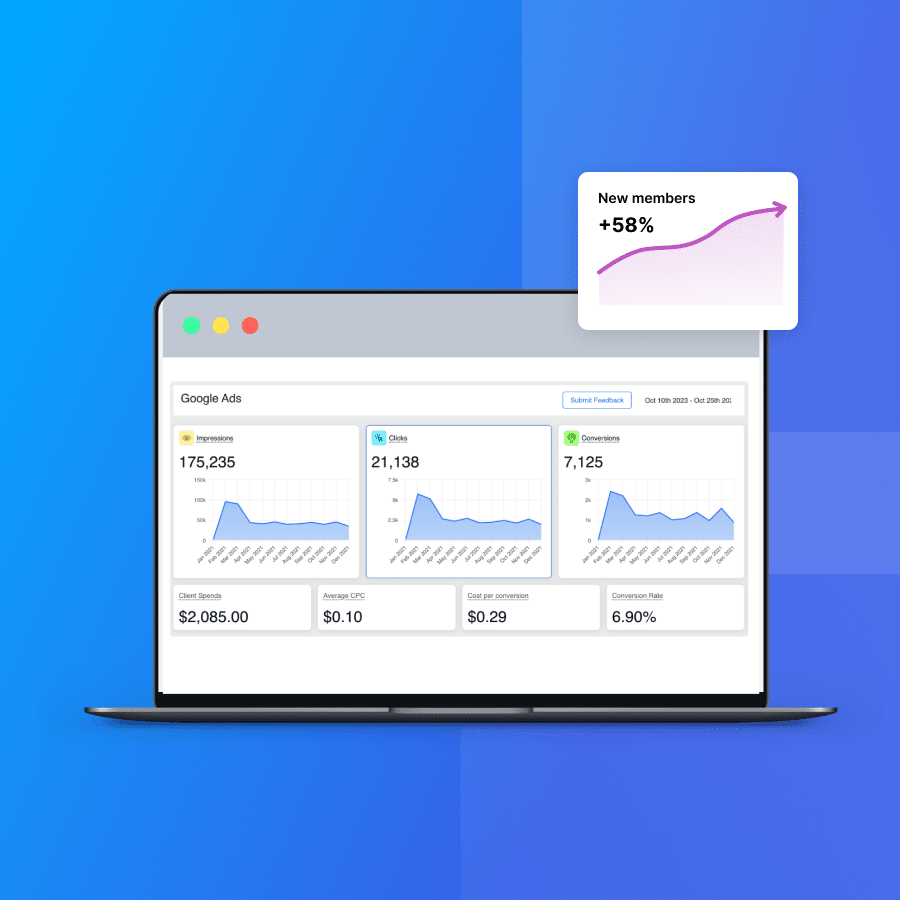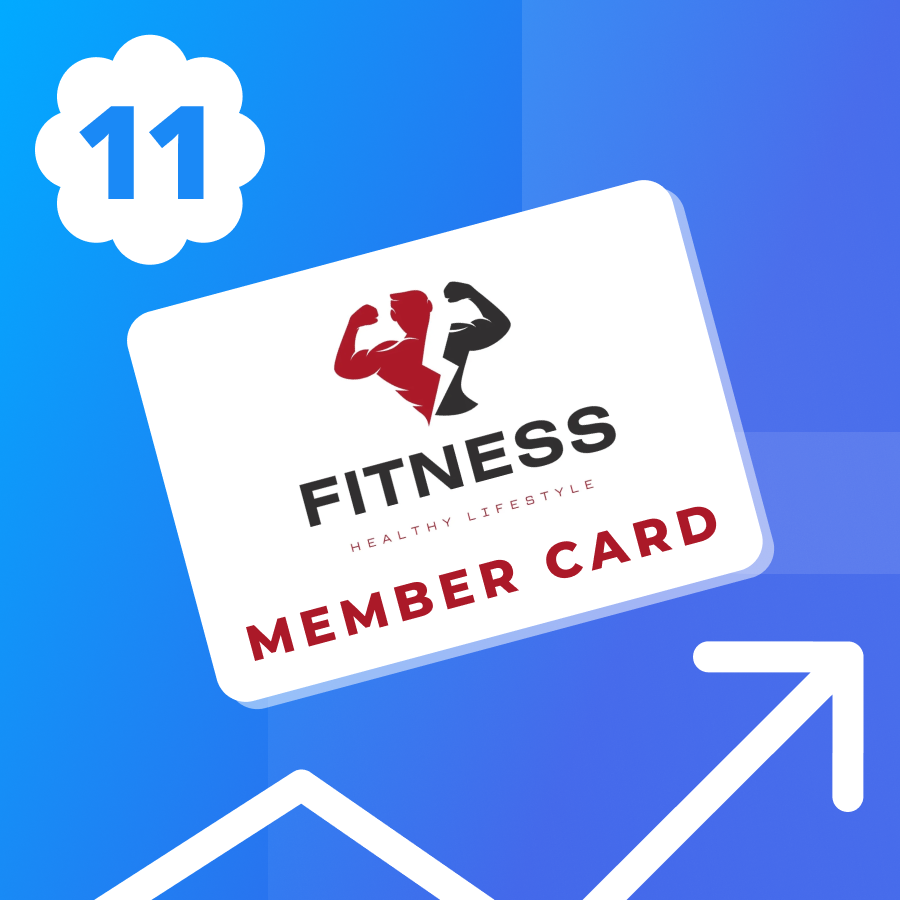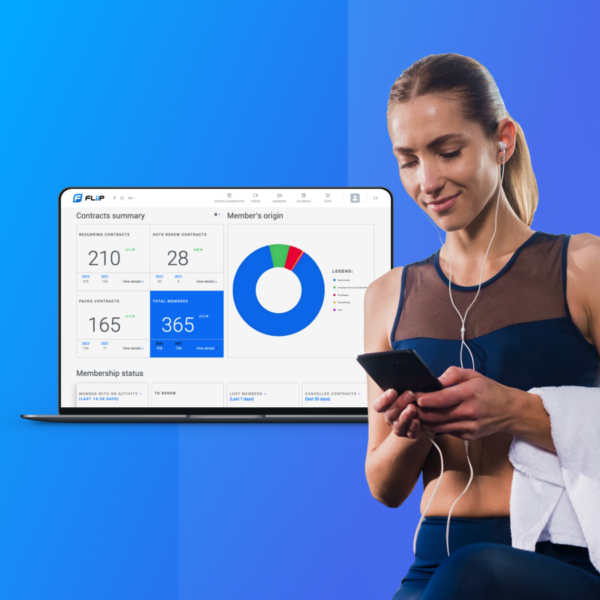SEO Tactics for Gyms to Boost Visibility and Member Acquisition

How can your gym or studio grab attention and become the preferred choice for new members?
The key is having good services and SEO to ensure the right people see them. This guide is your map to spark interest online and turn that interest into action—all the way to your sign-up page.
Keyword Research: Targeting Prospective Members
Knowing the words people use online helps you reach the right audience and be more visible to potential members.
- Start with Intent: Focus on keywords that indicate a readiness to join a gym or seek fitness advice. Phrases like “best gym near me” or “fitness classes for beginners” are valuable because they show a user’s intention to act.
- Tools of the Trade: Leverage tools such as Google’s Keyword Planner, SEMrush, or Ahrefs to uncover these valuable keywords. These platforms offer insights into search volume, competition levels, and even suggestions based on your initial keyword ideas.
- Local SEO: For gyms, the local aspect of your SEO strategy is non-negotiable. Incorporate local keywords into your research. Terms like “[your city] gyms” or “fitness centers in [your neighborhood]” can dramatically improve your visibility to a local audience actively seeking fitness options.
Website Content Optimization for Conversion
Once you’ve honed in on your target keywords, the next step is to ensure your website’s content is primed to attract and convert visitors into members. Here’s how to make every word on your site work toward your membership goals:
Craft Content That Connects
Your website should offer clear and compelling information about what makes your gym the perfect choice for potential members. From the unique benefits of your facilities to the success stories of current members, your content should resonate with the needs and aspirations of your audience.
Attract, Engage, Retain: Marketing Strategies for Gym Owners
Headlines That Hook
The power of a captivating headline cannot be overstated. It’s often the first thing visitors see, and it can make the difference between them staying to learn more or leaving your site. Use headlines to spark curiosity while clearly communicating the value you offer.
Meta Descriptions That Motivate
While meta descriptions don’t directly impact your SEO rankings, they’re crucial for click-through rates. A well-crafted meta description acts as an ad for your content, offering a sneak peek that encourages searchers to click. Include your target keywords and a clear call to action.
Images That Speak
Visual content can significantly enhance your website’s appeal. Use high-quality, authentic images that reflect your gym’s energy and community vibe. Optimize image file names and alt text with relevant keywords to improve your site’s SEO and accessibility.
Calls to Action That Convert
Every page on your website should have a clear call to action (CTA) guiding visitors toward becoming members. Whether it’s a prompt to sign up for a free trial, join a fitness class, or contact you for more information, make it easy and enticing for visitors to take the next step.
Drive Membership Sign-ups with Local SEO
Local SEO is a game-changer for gyms looking to dominate their local market and attract members searching for fitness options nearby.
Google My Business: Your Online Front Door
Creating and optimizing your Google My Business (GMB) listing is like setting up a welcoming sign online. Ensure your listing is complete with up-to-date information, including your address, phone number, and hours of operation. High-quality photos of your gym and a detailed description can set you apart.
Garner and Leverage Reviews
Positive reviews are not just testimonials of your service quality; they’re also powerful SEO tools. Encourage your happy members to leave reviews on your GMB profile and respond thoughtfully to each review to show that you value feedback. This engagement can improve your visibility and appeal to prospective members.
Build Local Links
Links from local businesses, news outlets, and community websites can significantly boost your local SEO efforts. Partner with local businesses for cross-promotion or sponsor community events to get your gym mentioned and linked from reputable local sources.
Engage with the Community
Beyond digital efforts, engage in community activities and events. Hosting free workshops, fitness challenges, or participating in local fairs builds your local presence and creates opportunities for local media mentions and backlinks to your website.
Optimize for “Near Me” Searches
Ensure your website content includes location-based keywords that potential members will likely use when searching for nearby gyms. Phrases like “gym near me” or “fitness classes in [Your City]” should be naturally integrated into your site’s content.
Ensuring a Mobile-Friendly Experience
Most potential gym members will likely first encounter your gym on a mobile device, making it imperative to ensure a seamless experience that encourages them to explore further and eventually sign up.
Prioritize Speed and Simplicity
A mobile-friendly website loads quickly and navigates easily. Large images and complex designs slow down your site, which can deter potential members. Optimize images and streamline your site’s design to ensure pages load swiftly and smoothly on all devices.
Responsive Design
A responsive website automatically adjusts to fit the screen size of the device it’s being viewed on, providing an optimal viewing experience for users, whether on a phone, tablet, or desktop. This adaptability improves user experience and positively impacts your SEO rankings, as Google favors mobile-responsive sites.
Touch-Friendly Navigation
Ensure that all buttons, links, and forms on your website are easy to interact with on a touch screen. Oversized buttons, simplified forms, and easily scrollable pages make for a user-friendly experience that can keep potential members engaged.
Mobile Content Optimization
While your content should be consistent across devices, how it’s presented may need to be adjusted for mobile. Keep paragraphs short, use bullet points for easy reading, and ensure your calls to action (CTAs) are prominently displayed to catch the eye of your mobile audience.
Test and Improve
Use tools like Google’s Mobile-Friendly Test to see how well your website performs on mobile devices and identify areas for improvement. Regular testing and updating are crucial to stay ahead of the curve and ensure your website meets the expectations of modern gym-goers.
If you need help creating an optimized website for your gym, we have a solution to help you build beautiful landing pages and funnels to capture leads.
Tracking and Analyzing Your SEO Performance
To ensure that your SEO efforts are effectively translating into increased visibility and new member sign-ups, it’s essential to track and analyze your performance.
Set Up the Right Tools
Begin with setting up Google Analytics and Google Search Console on your website. These free tools provide invaluable insights into your website’s traffic, how users find you, and how they interact with your content. Tracking these metrics over time will give you a clear picture of your SEO performance.
Monitor Organic Search Traffic
An increase in organic search traffic is one of the most direct indicators of SEO success. Regularly check how many visitors are coming to your site through search engines. An upward trend in organic traffic is a good sign that your SEO strategies are working.
Track Keyword Rankings
Keep an eye on where your website ranks for your targeted keywords. Tools like SEMrush, Ahrefs, or Moz can track your rankings over time. While fluctuations are normal, your goal is to see a general improvement in rankings for your key terms, especially those with high intent.
Measure Conversion Rates
Traffic is essential, but what really matters is conversion. Set up goals in Google Analytics to track how many visitors are taking desired actions, such as signing up for a trial, contacting your gym, or subscribing to your newsletter. Analyzing these conversion rates will help you understand which SEO tactics directly contribute to your membership growth.
Assess Page Performance
Analyze the performance of individual pages on your site to see which ones attract the most traffic and conversions. This insight can help you identify what content resonates with your audience and what might need optimization or updating.
Final Words
SEO is not a set-it-and-forget-it strategy, so let this guide be your starting point, not your endpoint.
As search engines refine their algorithms and user behaviors shift, staying informed and agile will be your greatest asset. With each tweak to your website, every blog post published, and all the interactions on social media, you’re laying down the building blocks for a thriving community centered around your gym.



